FAST
FACTS
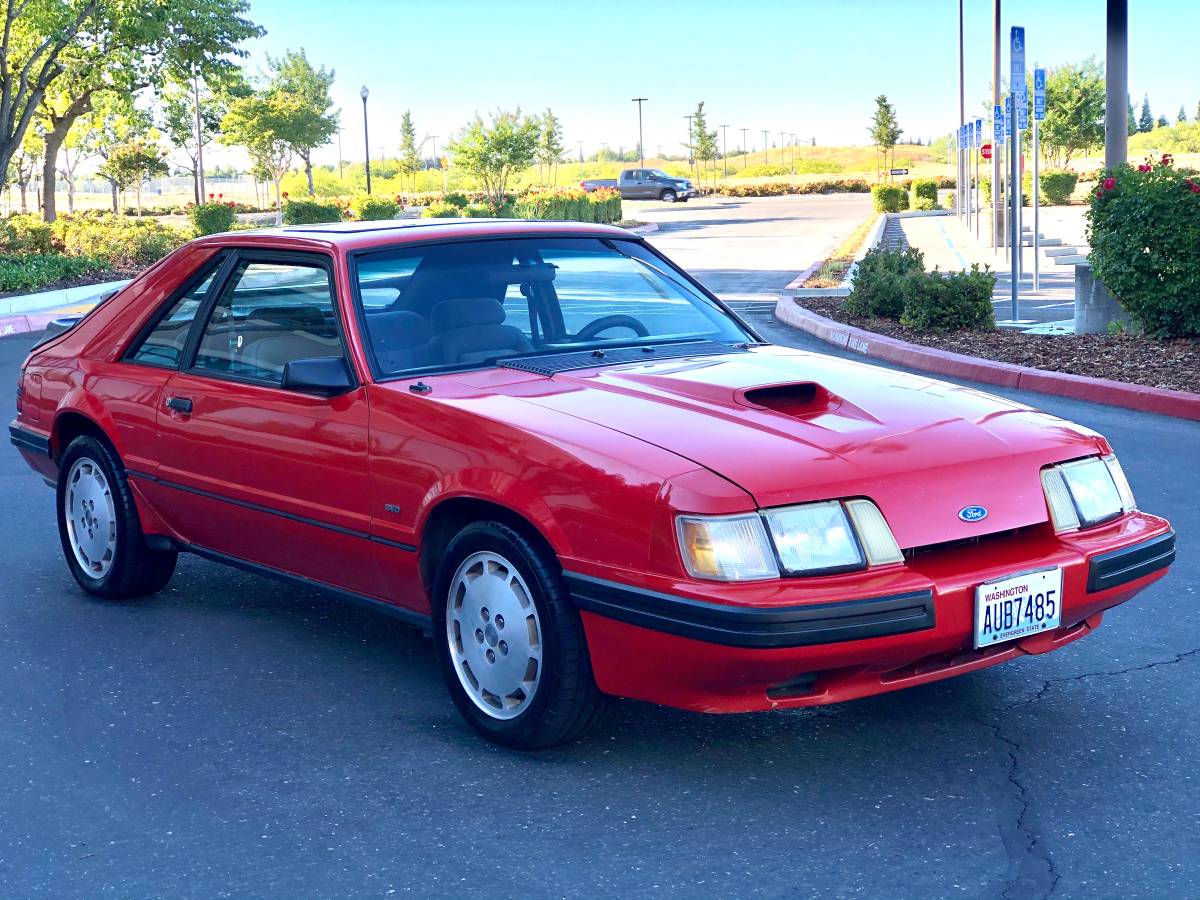
- If the unique tail lights of the SVO seem familiar, it’s because they make a comeback on the 1993 SVT Cobra
- The SVO features an interior switch that allows the driver to switch the ECU’s fuel calibration between premium fuel and regular fuel
- The original 1984 Mustang SVO was the first product from Ford’s newly launched “Special Vehicle Operations” (Ford’s racing division). With buyer interest shifting toward economical Japanese cars, and with new CAFE mpg mandates being implemented, SVO chose to go the route of a small turbo 4-cylinder powerplant
- They started with the OHC 2.3L from the Pinto/Mustang II, and added forged aluminum pistons, high-temperature valves, an oil cooler, a tuned intake manifold, and most importantly: a computer-controlled turbocharger with variable boost control and an air-to-air intercooler
- Most turbo systems of the time would mechanically reach boost immediately (like an on/off switch). This forced carmakers to limit boost to around 10 psi to avoid engine damage at low RPM. The SVO’s system, however, limits boost at low RPM and provides infinitely variable boost as the RPM rises. This is an early form of variable boost control
- Early cars saw up to 14 lbs of boost (later cars saw 15 lbs). This was the highest amount of boost for any production engine at the time. For safety, Ford included an overboost warning buzzer in the dash
- The result is that the 4 cyl SVO put out identical power numbers to the 5.0 V8 GT of the same year. However, SVO’s development goals put emphasis on handling, not horsepower. This meant the lighter 4-cyl engine sat behind the front axle, allowing the SVO to have a superior weight distribution than the 5.0 GT. Factory curb weight (no options) was quoted under 3,000 lbs, and a bi-plane polycarbonate rear wing provided the required downforce
- SVO cars built after Dec ’83 came with 6 shock absorbers from the factory. 4 of them (Koni) are at each corner, while two additional shocks act as traction bars mounted horizontally between the ends of the rear axle and the frame to keep the rear planted during aggressive acceleration/deceleration. Prior to December ’83, steel traction bars were used instead of shocks
- The SVO’s large brakes came from the bigger Lincolns of the time. In addition, Ford decided to include the large brake pedal from the automatic transmission models in an effort to simplify heel/toe shifting
- The amount of development work that went into the electronic turbo system, the ECU’s advanced EEC-IV microprocessor, and the handling R&D contributed to the $6,000 premium over a standard V8 GT
Key Model Year Changes:
Specs:
1984 |
1985 |
1985.5 |
1986 |
2.3L Turbo 4 Cyl | 5spd Manual |
205 hp @ 5000 RPM | 248 ft/lbs @ 3200 RPM |
0-60 MPH: 7.5 sec | Top Speed: 128 mph |
Base Price in 1985: | $15,970 |
– Click for shipping quote –
Model year pictured: 1986
Mileage: 38,950

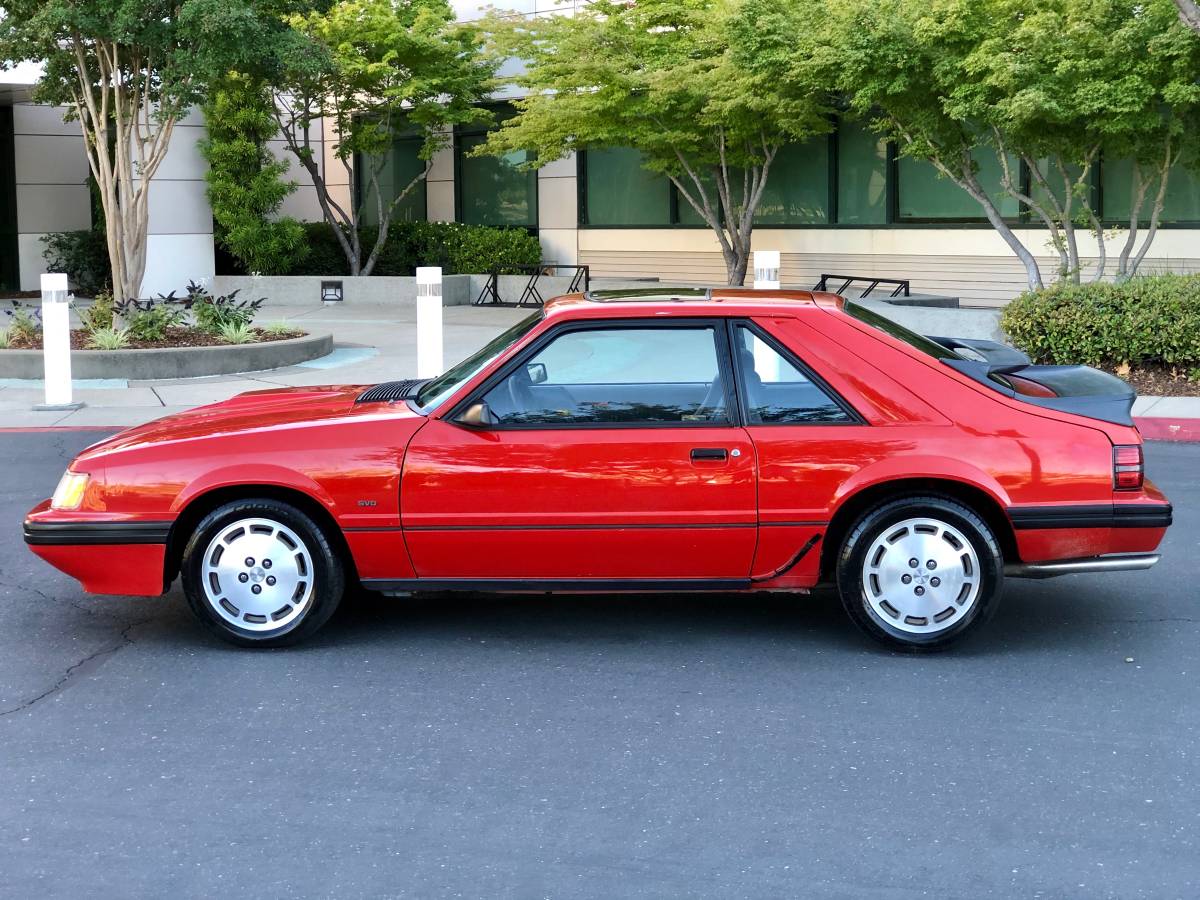
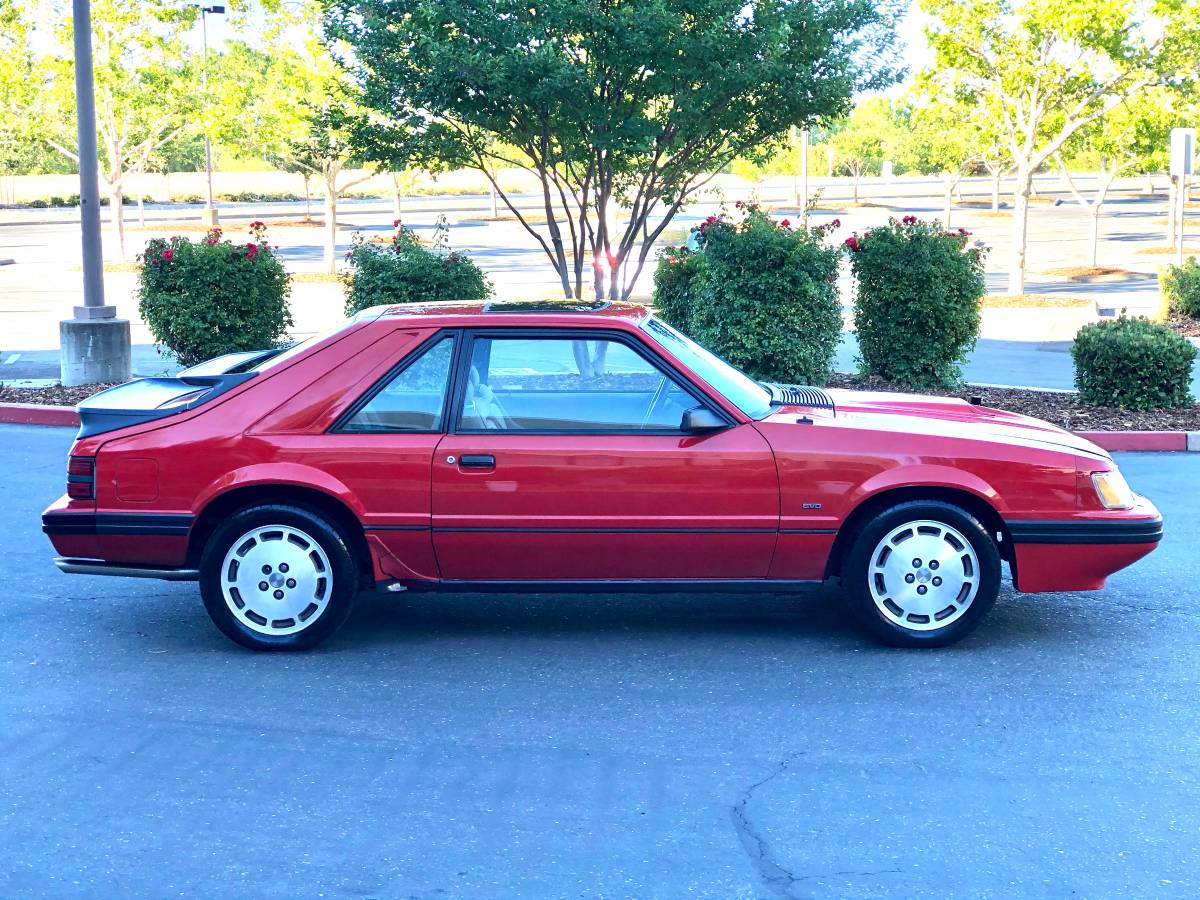
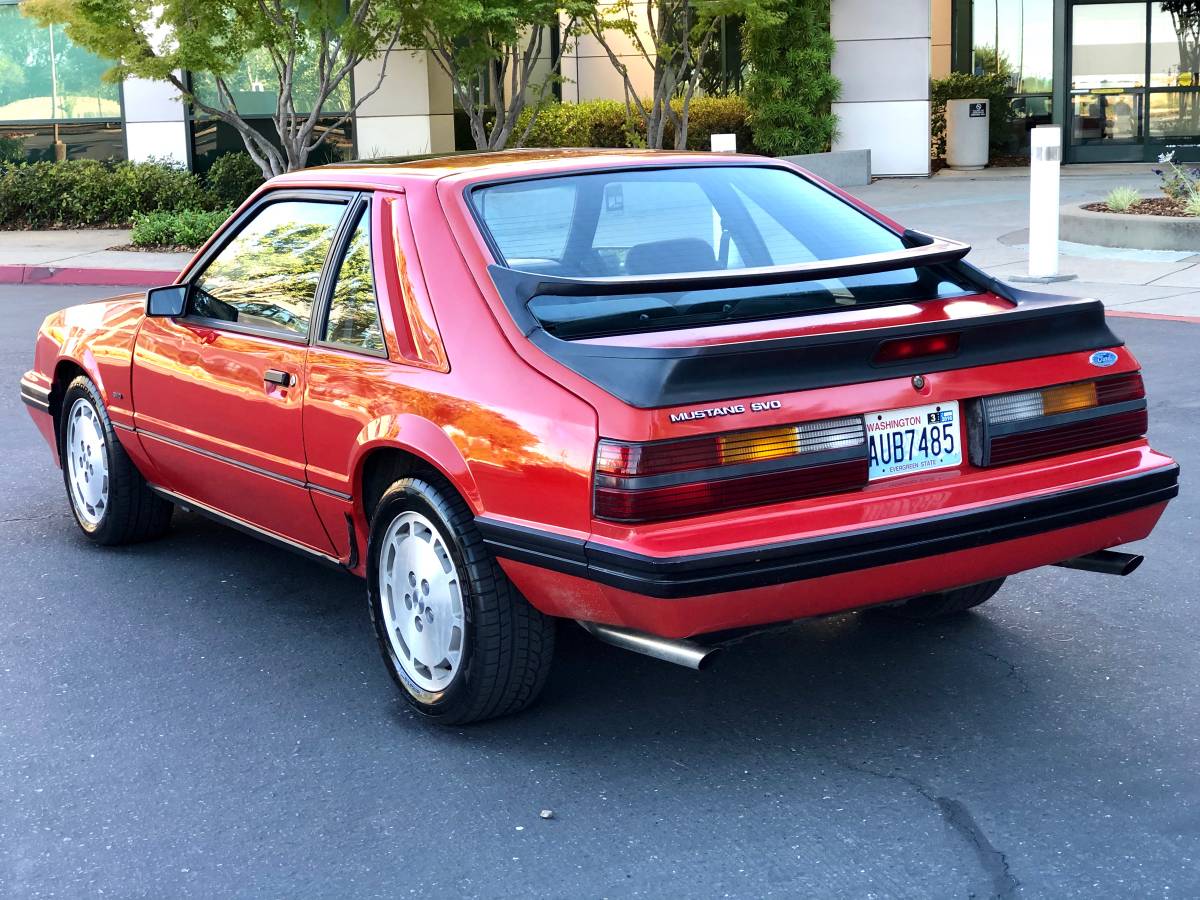
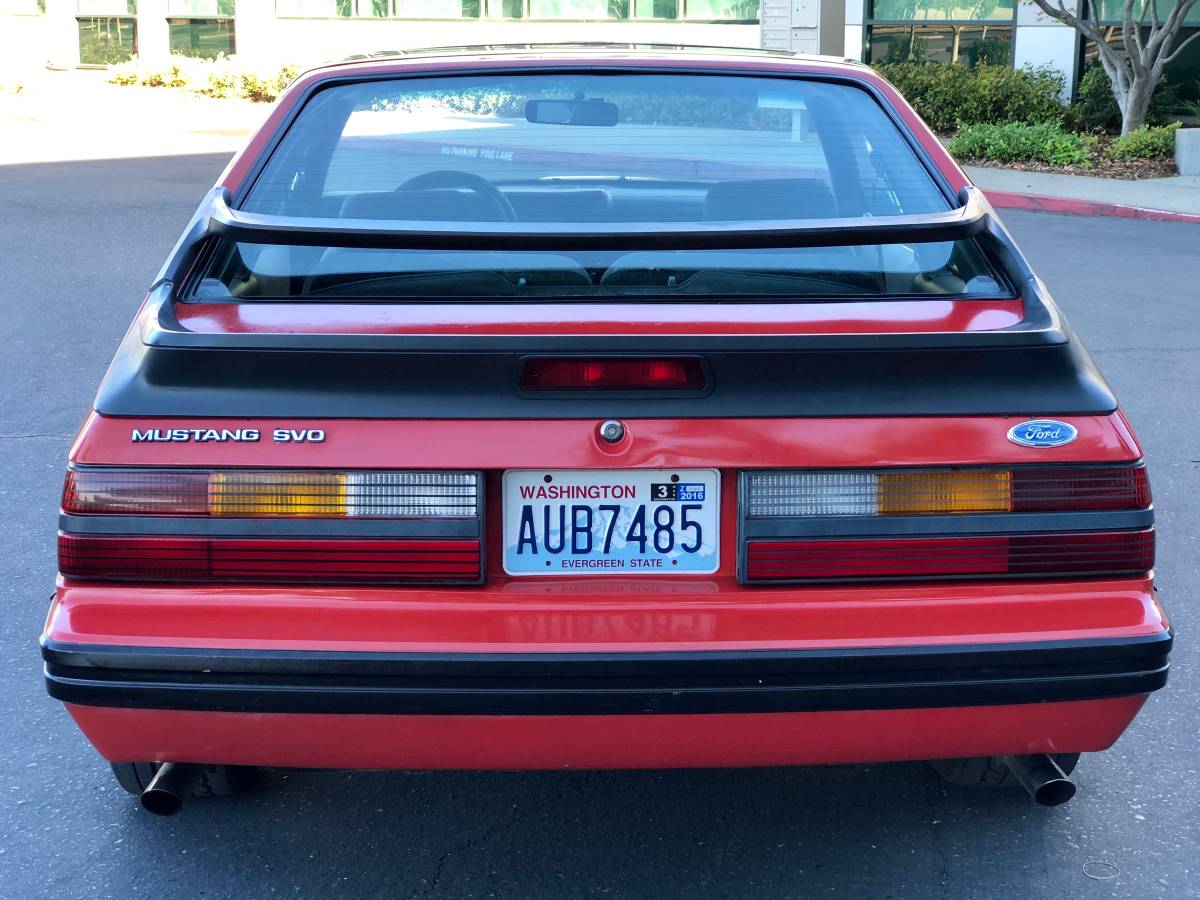
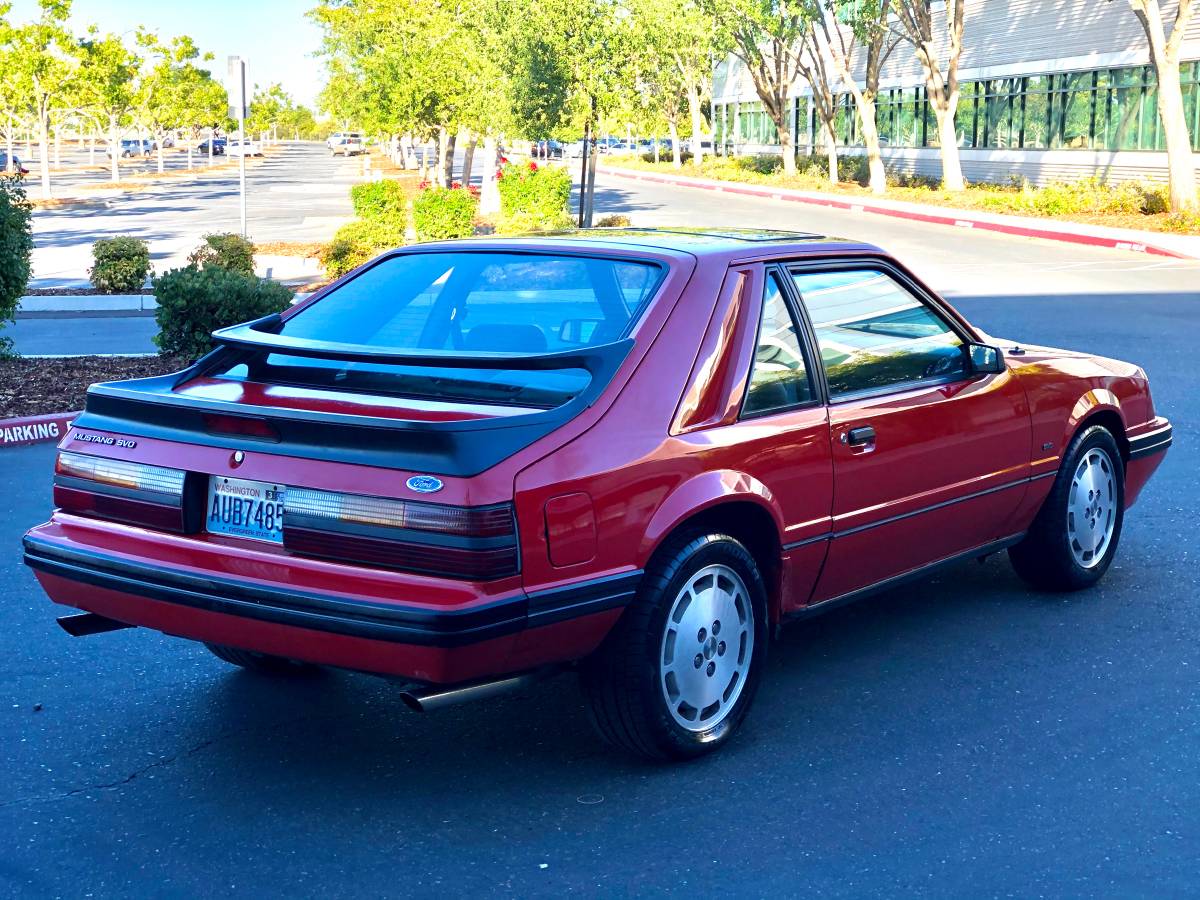
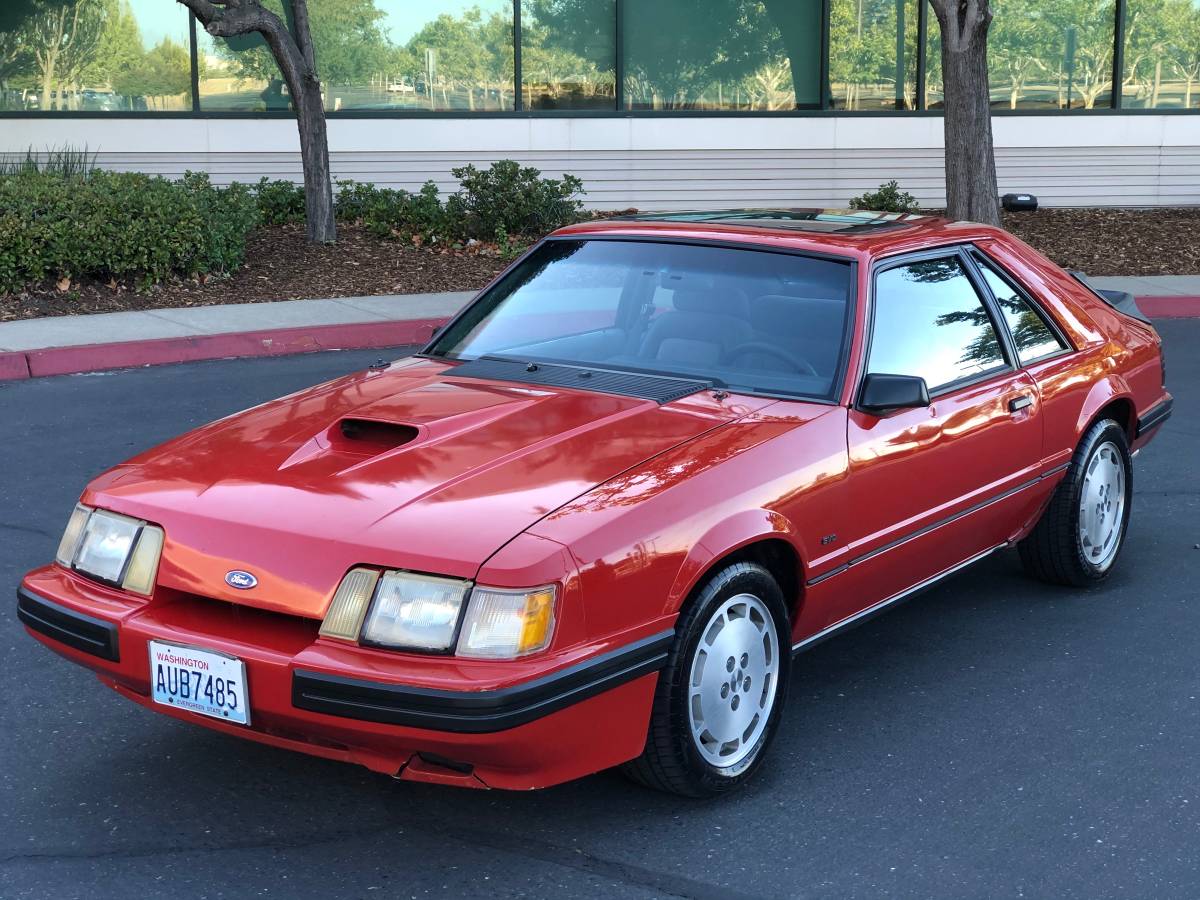
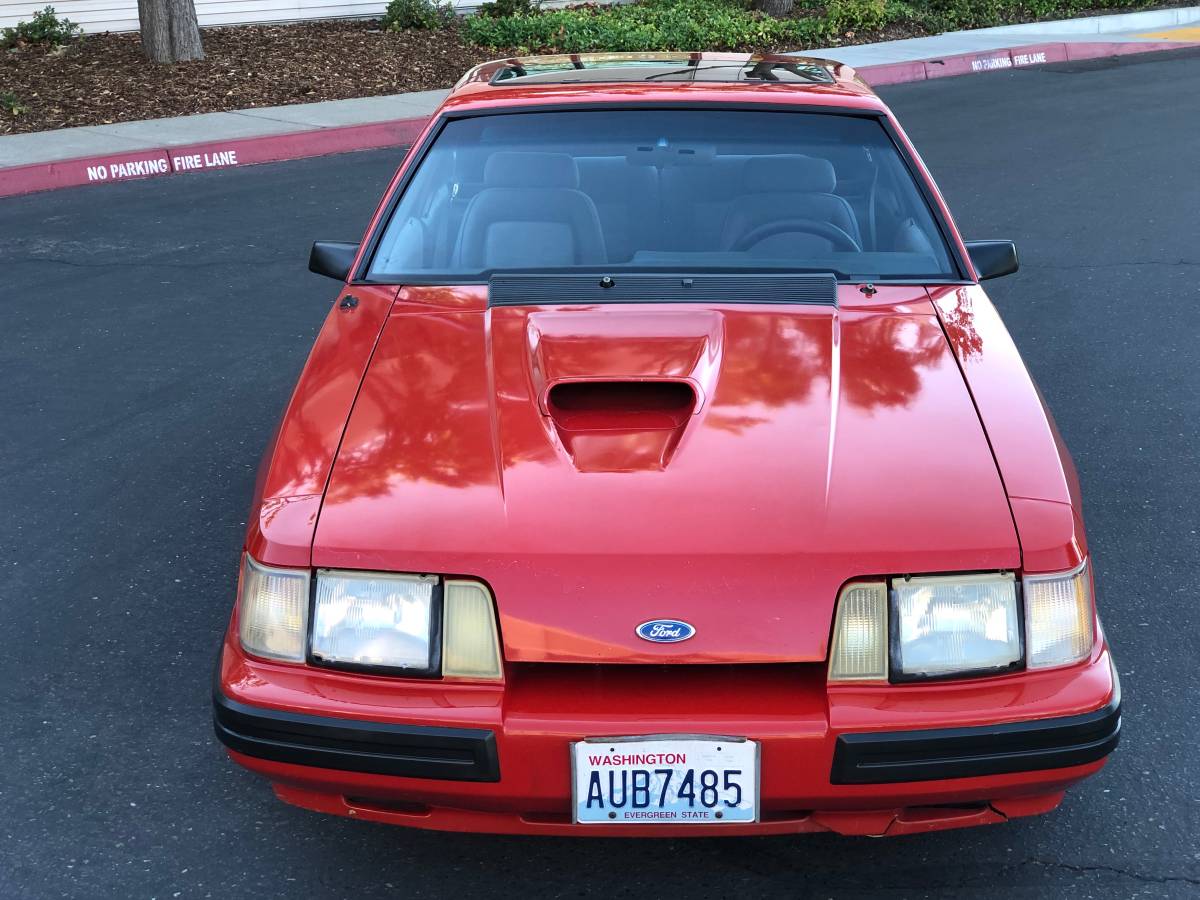
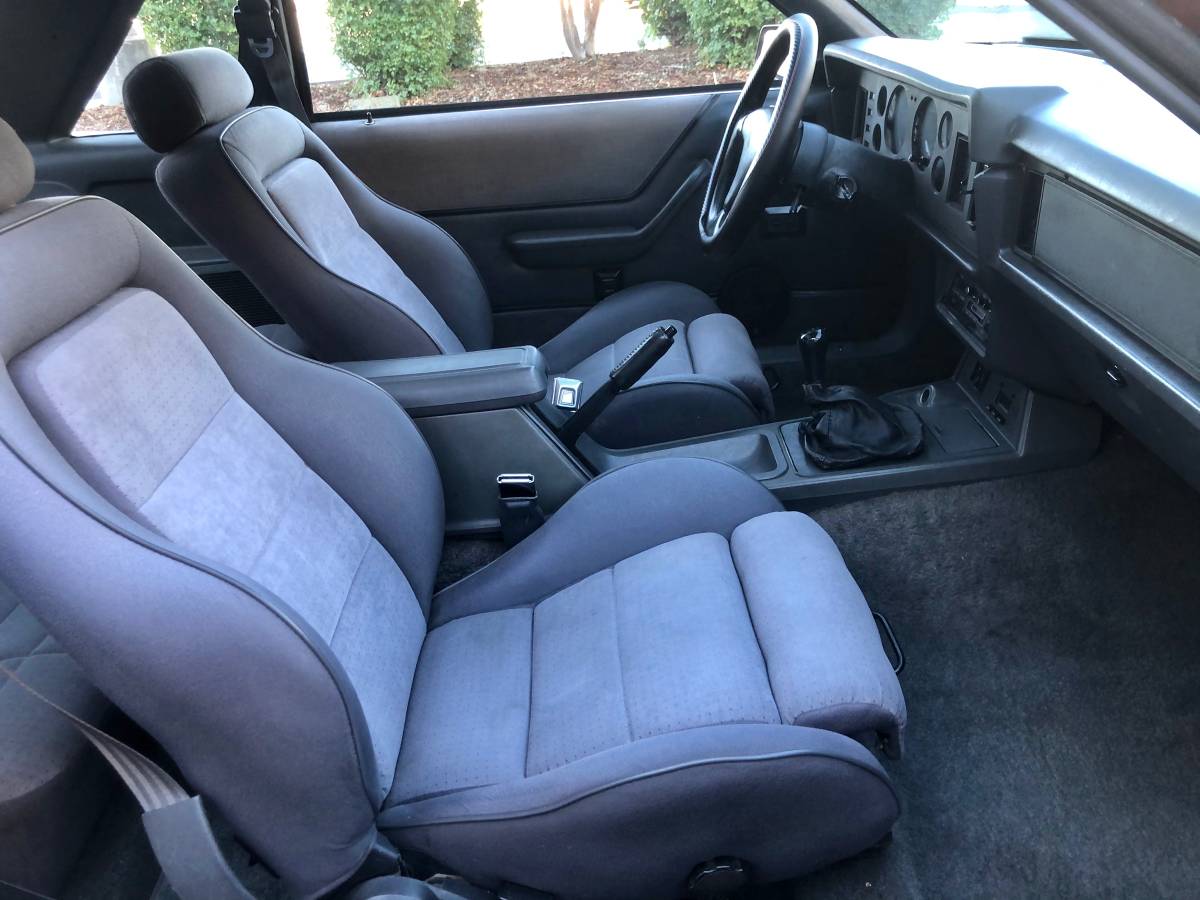
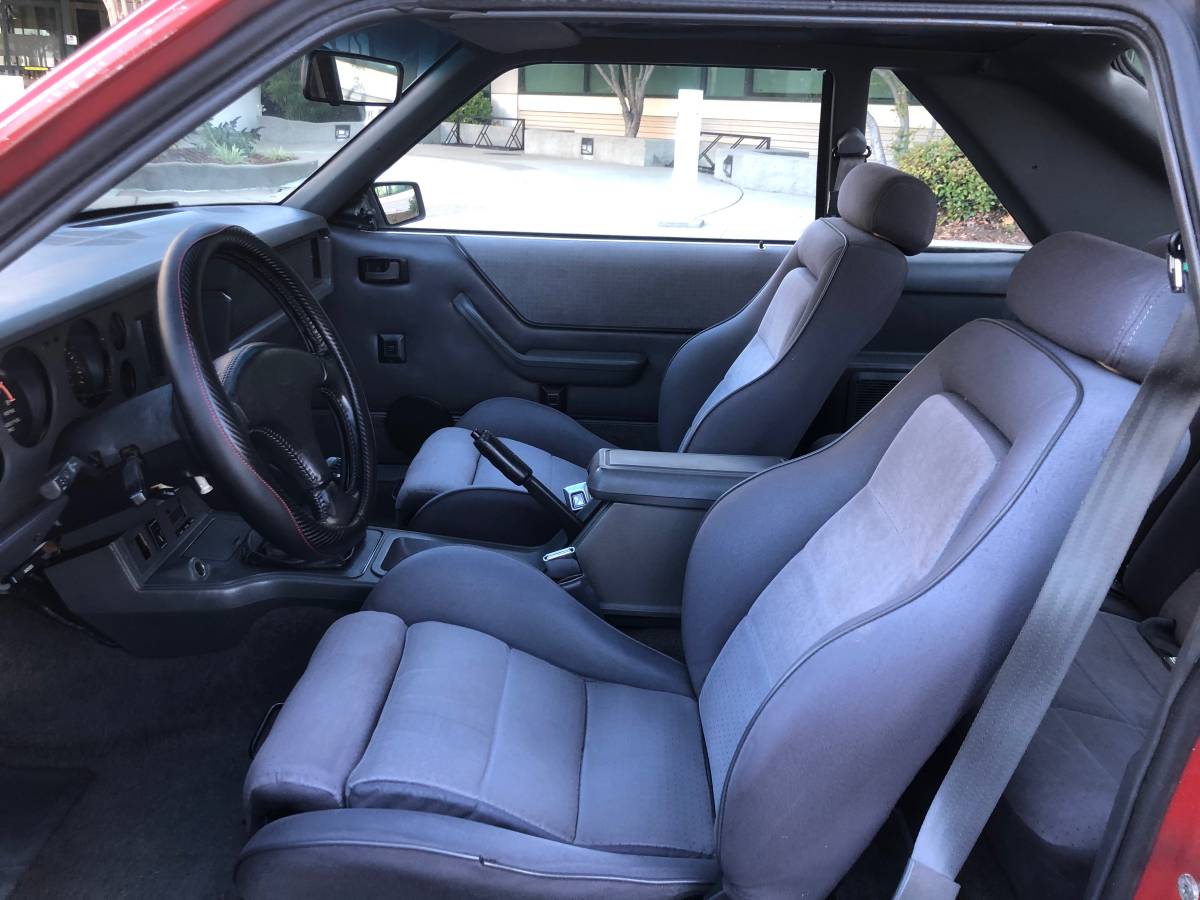
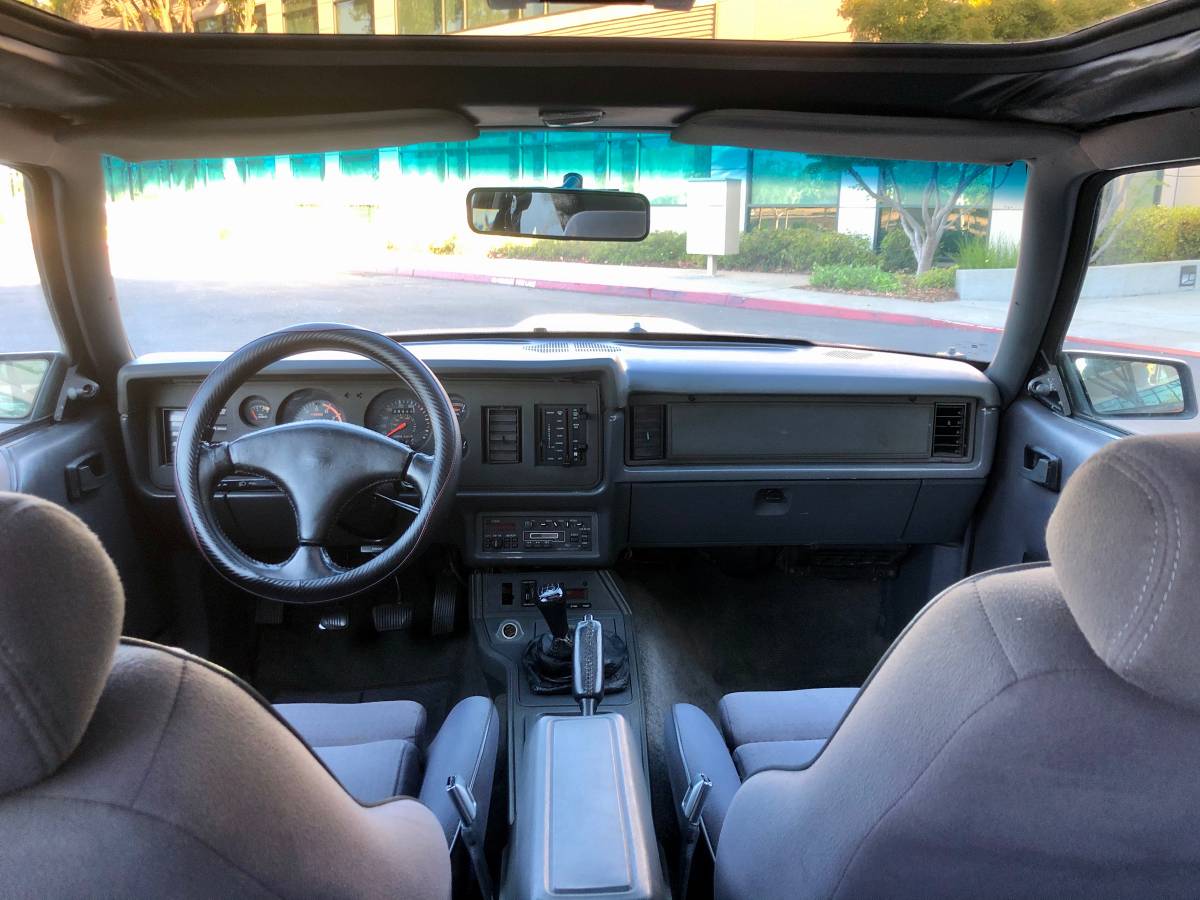
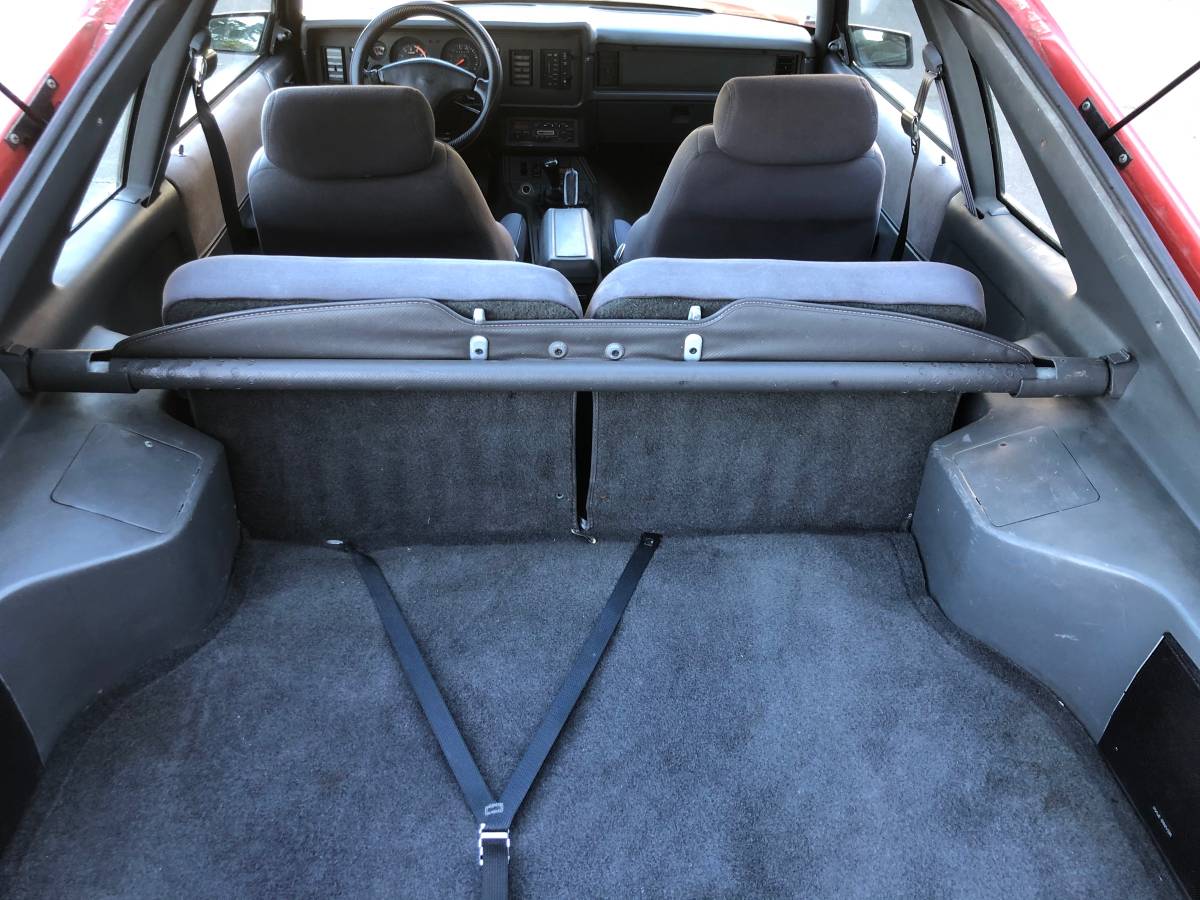
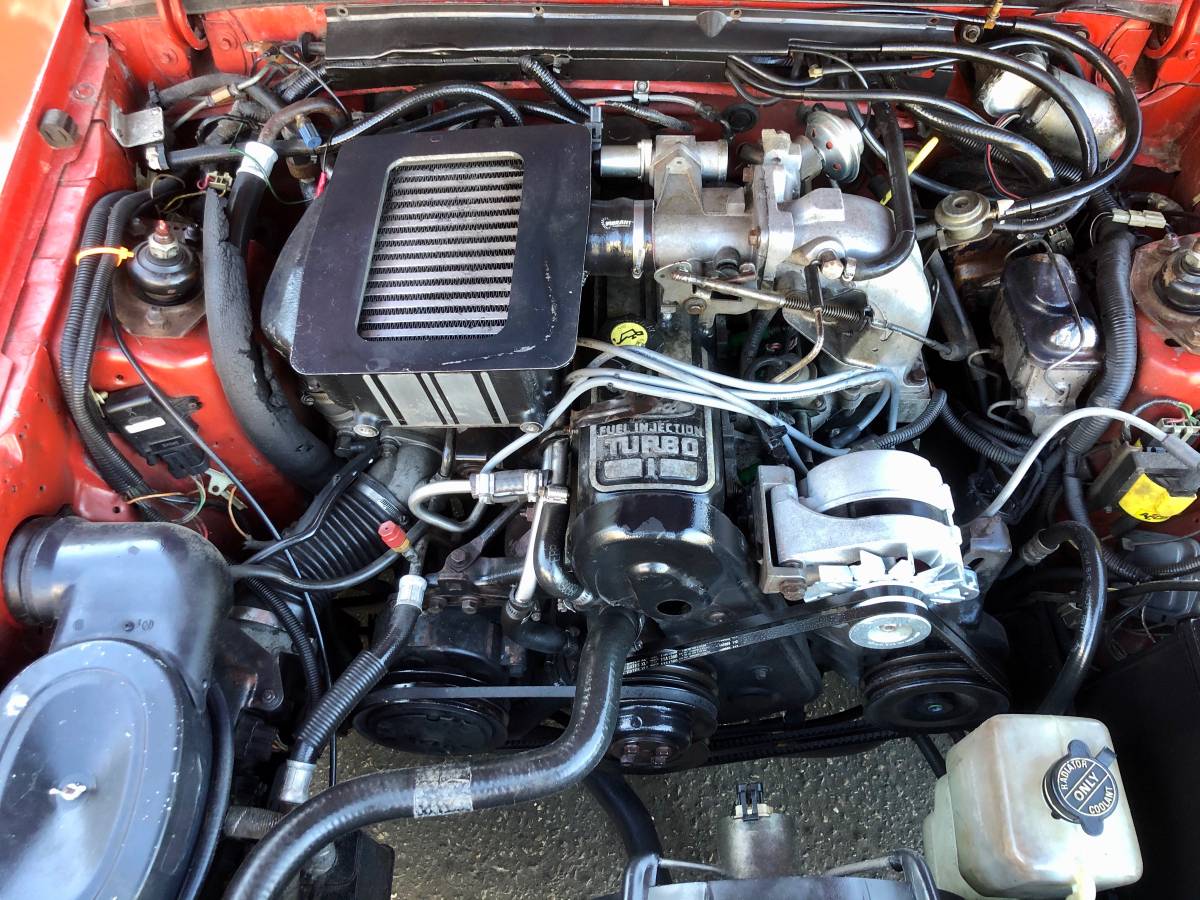
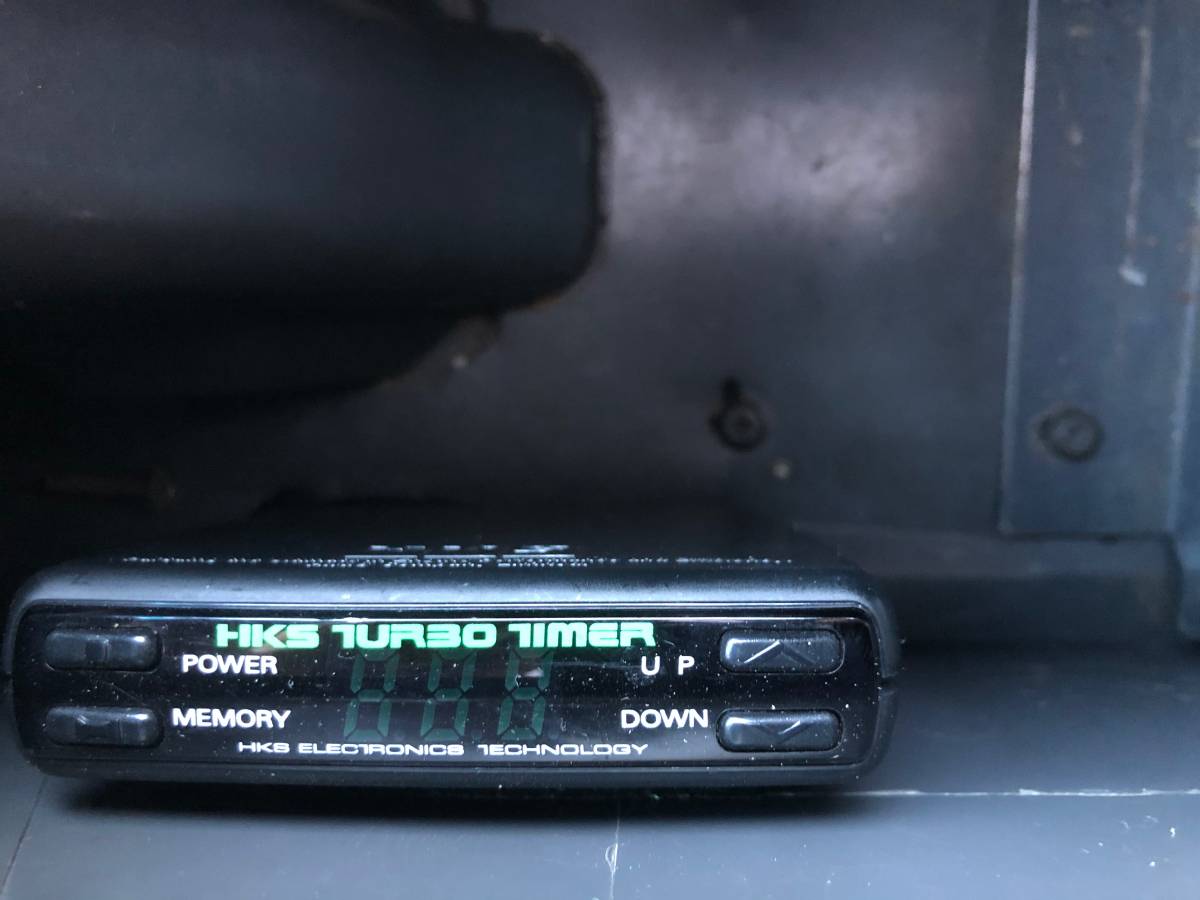

- COMMENTS -